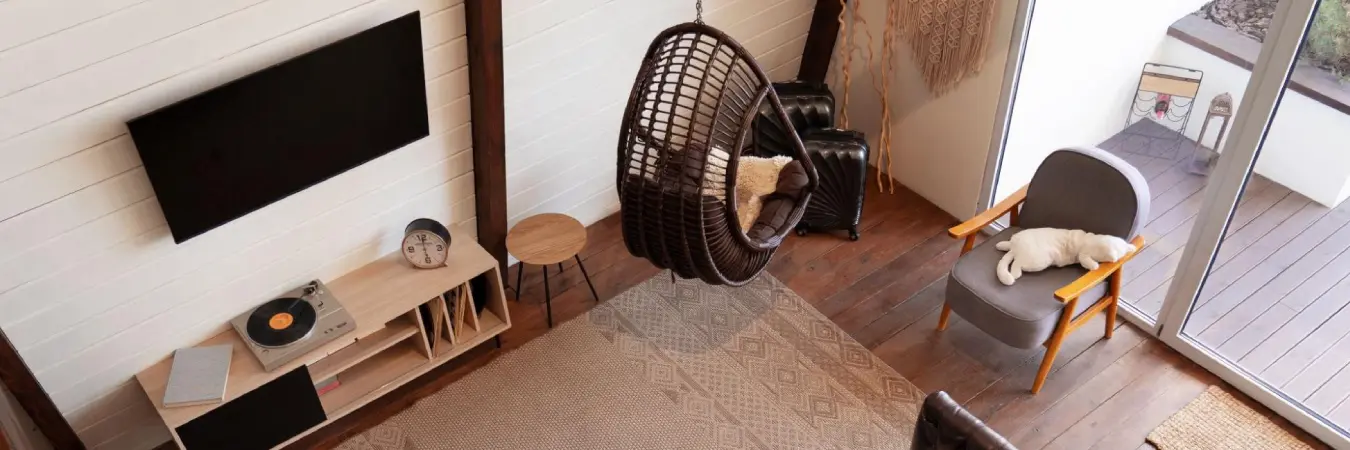Exploring the Differences between MOFA Carpet Area and RERA Carpet Area
Table Of Contents
If you’re a prospective homebuyer, then there’s a good chance that you have come across the terms RERA or MOFA carpet area, and you might be unsure as to what either of them indicate. Let’s begin with what both MOFA and RERA are, and what their importance in real estate is.
MOFA is a crucial piece of legislation that was passed in the state of Maharashtra to protect the rights of those who buy apartments. In order to maintain transparency and control over real estate transactions, MOFA imposes certain guidelines on developers with projects based in Maharashtra – also giving flat buyers more leverage in the realm of real estate.
RERA is a key regulation that guarantees a certain level of accountability and openness in India’s real estate market. It is implemented at all levels and requires developers to register each of their projects, follow deadlines, and also practice financial restraint. RERA improves confidence and integrity in the real estate industry by shielding consumers from deceptive advertising and establishing a grievance redressal procedure as well.
What is MOFA? Role and Importance in Real Estate
MOFA Full Form in Real Estate
MOFA stands for the Maharashtra Ownership of Flats Act.
MOFA is one of the key elements of the real estate market of Maharashtra. MOFA was enacted to safeguard the rights and interests of buyers of apartments, and it is essential to maintaining accountability, openness, and equitable procedures in real estate transactions.
Property Registration
The requirement that developers register their properties and projects with the relevant authorities is one of the core tenets of MOFA. The goal of this registration procedure is to provide a controlled atmosphere where developers are responsible for their work. In-depth plans, specs, and documentation are all included, promoting transparency from the project’s very beginning.
Stopping Unjust Practices
The purpose of MOFA is to stop unfair practices that could harm the interests of homebuyers. According to the statute, developers are not allowed to give misleading information, make false claims, or engage in any other behavior that would mislead those looking to buy apartments. By using this proactive approach, developers can guarantee that the information they provide is genuine and trustworthy while also protecting purchasers from falling victim to fraudulent schemes.
Timely Delivery of Property
The prompt delivery of the property is one of the main issues in real estate deals. In order to remedy this, MOFA establishes a deadline for developers to give flat buyers possession. By holding developers responsible for project delays and guaranteeing that buyers receive their residence in a reasonable amount of time, this clause reduces uncertainty and boosts customer confidence.
Understanding MOFA Carpet Area
The definition of carpet area provided by MOFA is with the aim of promoting equity and clarity in real estate transactions, especially when selling apartments. According to MOFA, carpet area is a critical measurement that indicates the real usable space and total floor area inside an apartment’s walls, that also includes the balcony and excludes the inner walls.
It’s crucial to understand that carpet areas are different from super built-up areas and built-up areas. Super built-up area contains common areas such as lobbies, stairwells, and many other shared spaces, while built-up area comprises the carpet area as well as the thickness of the walls.
As you might already know, the impact that carpet area has on a flat’s price makes it a significant aspect. MOFA ensures openness in real estate transactions by requiring developers to include a precise specification of the carpet area in the agreement for sale. Since buyers of apartments are charged according to the real usable space of the property, this rule avoids confusion and safeguards their interests.
What is RERA? Role and Importance in Real Estate
RERA is a fundamental shift in real estate regulation that has been adopted by states including Maharashtra, and implemented nationally. RERA was passed in 2016 with the intention of bringing openness and standardization to India’s real estate market. Let’s take a deeper look at some of the roles of RERA in real estate.
Regulations for Advanced Payments
RERA imposes more stringent rules on buyers’ upfront payments. Before a sale agreement is signed, developers are not allowed to seek an advance of more than 10 percent of the property’s cost. This clause safeguards customers from undue financial hardship and is consistent with the main objective of RERA, which is to guarantee honest and open dealings.
Account Escrows and Project Postponements
Developers are required by RERA to place a certain percentage of buyer payments into an escrow account. By ensuring that money set aside for a certain project is used only for that project, this financial discipline lowers the possibility of misappropriation and diversion. RERA makes developers accountable in the event that a project is delayed. Developers are responsible for compensating buyers for any delays in completion if they are unable to finish a project on schedule. This clause encourages developers to stick to project timetables by giving customers an extra degree of financial certainty.
Understanding RERA Carpet Area
The net usable floor area inside a residential unit’s walls, excluding the area set aside for balconies, but including the area of the internal walls, is referred to as the carpet area according to RERA guidelines. The main principles behind RERA’s emphasis on carpet area is to give buyers of properties a clean-cut and uniform scale of evaluating a property’s genuine living space. By guaranteeing this level of uniformity in real estate dealings, this definition enables purchasers to make well-informed choices based on the functional, usable area they will be able to occupy. RERA’s definition of what carpet area is helps in promoting transparency and accuracy by external walls and shared areas out of the calculations, which strengthens accountability and trust in the real estate market.
What Separates MOFA Carpet Area vs RERA Carpet Area
Let us take a look at the main differentiating factors of the definition of carpet area under MOFA guidelines in comparison to RERA guidelines.
Balcony
Under MOFA’s guidelines, the total floor area of a flat including that of its balcony are included in the total calculation of its overall carpet area.
RERA, on the other hand, does not include any areas that are outside the external walls of a home – which means that a balcony, verandah, or terrace will not be included in the calculation.
Internal Walls
Another main aspect of MOFA carpet area is that when calculating the total carpet area, it does not take into account the internal walls of an apartment
RERA, while it does not include the external walls, includes the thickness of a home’s internal walls when calculating its total carpet area.
The Effect of RERA & MOFA Carpet Area of Real Estate Stakeholders
Homebuyer Empowerment
Homebuyers are immediately impacted by the exact definitions of carpet by RERA and MOFA. These specifications enable homebuyers to make decisions based on the actual space they will inhabit by precisely defining the usable space inside the walls and omitting elements such as common corridors. By eliminating any room for doubt or inconsistency during real estate transactions, this clarity guarantees that buyers pay for the actual area that they receive.
Effect on Costs
For developers as well as purchasers, the carpet area definitions have a significant financial impact. In order to enable purchasers to precisely assess the cost per square foot of the property, developers are required to disclose the carpet area in relevant sale documents. This clears any confusion and encourages fairer pricing.
Transparency in Standardization
The carpet area definitions provided by MOFA and RERA promote uniformity in real estate transactions. Since both sides work within a well-defined structure, this uniformity fosters trust between buyers and builders. A more dependable and trustworthy real estate environment is produced by these standardized measurements, which limit the potential for disagreements and legal issues as well.
Builder Accountability
Following through on the specified carpet area is the responsibility of the developers of the property in question. Developers are requested to promptly depict the precise measurements of the property as any deviations from the specified measurements could even result in legal disputes.
Case Study
In 2022, a number of housing societies in Maharashtra called to oppose the repeal of the MOFA, with the argument that MOFA has proven to be more helpful to the interests of homeowners than RERA has. For a better look at the story, check out the link below:
https://timesofindia.indiatimes.com/city/pune/housing-societies-oppose-repeal-of-mofa-say-rera-not-always-helpful/articleshow/94632116.cms
FAQ’s
-
What gives more carpet area RERA or MOFA?
When you are comparing the carpet area of a property in accordance with RERA as well as MOFA, RERA’s calculation of carpet area will typically give you a higher number than MOFA’s calculation. This is due to the fact that RERA makes more specific exclusions and inclusions, including the thickness of the property’s internal walls.
-
What is the main difference between carpet area RERA or MOFA carpet area?
The differences between MOFA and RERA carpet areas are not as vast as one might think. The main difference is in the inner wall thickness – included by RERA and not by MOFA – and the balcony – included by MOFA and not by RERA.
Conclusion
MOFA has been a part of the real estate realm of Maharashtra for over 60 years, and has proven to be a great point of recourse for apartment owners in the state in that period of time. While protecting the interests of the consumer and preventing any illegitimate and unethical practices by developers, MOFA has been a major pillar in Maharashtra residential real estate.
On the other hand, RERA was introduced merely less than 8 years ago in 2016, but has also been a hugely influential step in the protection of the rights of homebuyers and consumers. Aiming to maintain a certain level of transparency and uniformity in real estate practices, the act has also promoted timely delivery of projects, regulated advanced payments, and also boosted the overall confidence of real estate investors.
It’s safe to say that both acts have been pivotal in upholding the fairness and reputation of the real estate industry of both Maharashtra and India as a whole.


